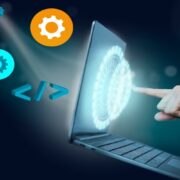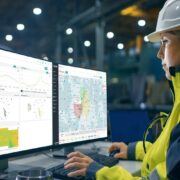In today’s fast-paced business environment, the need for effective management tools has never been more critical. Among the myriad of solutions available, Employee Monitoring Software stands out as a powerful tool for businesses aiming to streamline operations, ensure compliance, and boost productivity. Let’s delve into the realm of Employee Monitoring Software and explore its myriad benefits, features, and implementation strategies.
Table of Contents
Introduction to Employee Monitoring Software
Employee Monitoring Software encompasses a suite of tools designed to track, record, and analyze employee activities in the workplace. From time tracking to performance evaluation, these software solutions offer comprehensive insights into workforce behavior, enabling organizations to optimize their operations effectively. In an era where remote work and digital collaboration are the norm, Employee Monitoring Software plays a pivotal role in ensuring accountability and transparency across all levels of the organization.
Definition of Employee Monitoring Software
Employee monitoring software refers to technology solutions designed to track and record employees’ activities, both online and offline, during work hours. It enables employers to supervise and analyze employees’ performance, behavior, and productivity levels.
Importance of Employee Monitoring Software
Enhancing Productivity
One of the primary objectives of employee monitoring software is to boost productivity within the workplace. By providing insights into how employees spend their time, managers can identify inefficiencies, streamline processes, and allocate resources more effectively. Additionally, monitoring software can help employees stay focused on tasks and minimize distractions, thereby enhancing overall productivity levels.
Ensuring Security
In an era marked by increasing cybersecurity threats and data breaches, safeguarding sensitive information is paramount for businesses. Employee monitoring software plays a crucial role in maintaining security by monitoring employee behavior and identifying potential risks. It can detect unauthorized access attempts, suspicious activities, and data breaches in real-time, allowing organizations to take proactive measures to mitigate security threats.
Maintaining Compliance
With the implementation of stringent regulations such as GDPR and HIPAA, businesses are under immense pressure to ensure compliance with data protection and privacy laws. Employee monitoring software helps organizations adhere to regulatory requirements by tracking and documenting employee interactions with sensitive data. By maintaining detailed audit trails and activity logs, businesses can demonstrate compliance during audits and investigations.
Essential Features of Employee Monitoring Software
Employee monitoring software has become an indispensable tool for modern businesses aiming to streamline operations, enhance productivity, and ensure compliance with regulations. As workplaces evolve and remote work becomes increasingly prevalent, the need for effective employee monitoring solutions has never been greater. In this article, we’ll delve into the essential features of employee monitoring software and how they significantly impact management and decision-making processes.
Importance of Employee Monitoring
Employee monitoring serves multiple purposes, including ensuring productivity, detecting inefficiencies, preventing data breaches, and fostering a culture of accountability. By monitoring employee behavior, organizations can identify areas for improvement and optimize workflow processes.
Time Tracking Feature
One of the fundamental features of employee monitoring software is smart time tracking. This functionality allows employers to monitor the time spent by employees on various tasks and projects. By accurately tracking time, businesses can analyze productivity trends, identify bottlenecks, and allocate resources more efficiently.
Benefits of Time Tracking
- Resource Allocation: Enables businesses to allocate resources based on actual time spent on tasks.
- Performance Evaluation: Facilitates performance evaluations by providing insights into employee productivity levels.
- Project Management: Helps in project management by tracking time spent on different project phases and tasks.
Screen Monitoring Capability
Another crucial aspect of employee monitoring software is screen monitoring. This feature enables employers to observe employees’ computer screens in real-time, ensuring that they remain focused on work-related activities.
Ensuring Productivity
Screen monitoring acts as a deterrent to distractions and unauthorized activities during work hours. By monitoring screens, employers can identify non-work-related websites or applications that may affect productivity and address them promptly.
Activity Logging
Employee monitoring software also includes activity logging capabilities, which record detailed information about employee interactions with company devices and networks. This feature provides valuable insights into work patterns and employee behavior.
Understanding Work Patterns
Activity logs offer visibility into the applications used, websites visited, files accessed, and emails exchanged by employees. By analyzing this data, employers can identify trends, detect anomalies, and gain a deeper understanding of employee workflows.
Reporting Functions
Reporting functions are integral to employee monitoring software, allowing businesses to generate comprehensive reports based on monitored data. These reports offer actionable insights and facilitate data-driven decision-making processes.
Data Analysis and Insights
Reporting functions enable businesses to analyze employee performance, identify trends, and measure key performance indicators (KPIs). By visualizing data through graphs, charts, and dashboards, management can gain a holistic view of workforce productivity and efficiency.
Enhancing Management with Employee Monitoring Software
Employee monitoring software empowers management by providing valuable tools for overseeing workforce activities, optimizing resource allocation, and identifying areas for improvement.
Improving Decision-Making Processes
By leveraging the insights provided by employee monitoring software, businesses can make informed decisions regarding resource allocation, process optimization, and performance management.
Ensuring Compliance and Security
Employee monitoring software helps organizations ensure compliance with industry regulations and internal policies while enhancing data security measures. By monitoring employee activities, businesses can detect potential security threats and mitigate risks proactively.
Addressing Employee Concerns
While employee monitoring software offers significant benefits to employers, it’s essential to address employee concerns regarding privacy and autonomy. Open communication, transparency, and clear policies can help alleviate apprehensions and foster trust within the workforce.
Implementation and Integration
Successful implementation and integration of employee monitoring software require careful planning, employee training, and ongoing support. Organizations should tailor the software to their specific needs and ensure seamless integration with existing systems and workflows.
Best Practices for Using Employee Monitoring Software
To maximize the benefits of employee monitoring software, businesses should establish clear objectives, communicate expectations effectively, and respect employee privacy rights. Additionally, regular reviews and updates to monitoring policies can ensure alignment with evolving business needs and regulatory requirements.
Case Studies and Success Stories
Real-life examples and success stories illustrate the tangible benefits of employee monitoring software in various industries and organizational settings. Case studies highlight specific challenges, solutions implemented, and outcomes achieved through the adoption of monitoring technologies.
Future Trends in Employee Monitoring Software
As technology continues to evolve, employee monitoring software is expected to incorporate advanced analytics, artificial intelligence, and machine learning capabilities. Future trends may focus on predictive analytics, employee engagement metrics, and remote workforce management tools.
Implementation of Employee Monitoring Software
Best Practices
When implementing employee monitoring software, organizations should prioritize transparency, communication, and employee consent. It’s essential to clearly communicate the purpose and scope of monitoring activities and address any concerns or reservations raised by employees.
Addressing Concerns
Employee monitoring initiatives may raise concerns regarding privacy invasion and trust issues among employees. To mitigate these concerns, organizations should establish clear policies and guidelines governing the use of monitoring software, emphasizing its role in enhancing productivity and security rather than micromanaging employees.
Benefits of Employee Monitoring Software
Increased Productivity
Employee Monitoring Software allows employers to gain insights into how their employees spend their time during work hours. By identifying inefficiencies and distractions, employers can implement strategies to enhance productivity levels.
Reduced Operational Costs
Through monitoring software, employers can identify areas of workflow inefficiencies or redundancies, leading to cost-saving measures. Additionally, by optimizing employee performance and resource allocation, organizations can streamline operations and reduce overall expenses.
Improved Remote Work Management
With the rise of remote work, Employee Monitoring Software provides employers with the tools to effectively manage remote teams. It enables real-time collaboration, project tracking, and performance evaluation regardless of employees’ physical locations.
Benefits for Employees
Clear Expectations and Feedback
Employee Monitoring Software fosters transparent communication between employers and employees regarding job expectations and performance metrics. Clear feedback and performance evaluations empower employees to understand their strengths and areas for improvement.
Work-Life Balance
By providing insights into workload distribution and productivity patterns, monitoring software helps employees achieve a healthier work-life balance. It enables them to prioritize tasks effectively and allocate time for personal and professional pursuits.
Professional Development Opportunities
Through data-driven insights provided by monitoring software, employees can identify areas for skill enhancement and professional growth. Access to performance metrics and feedback encourages continuous learning and development.
Privacy Concerns and Mitigation Strategies
While the benefits of Employee Monitoring Software are significant, privacy concerns may arise among employees. Employers must implement transparent policies and procedures regarding data collection, usage, and storage to maintain employee trust and confidentiality.
Implementation Best Practices
To maximize the benefits of monitoring software, employers should establish clear objectives, provide adequate training, and ensure open communication with employees. Additionally, organizations should regularly evaluate and refine their monitoring strategies to adapt to evolving workplace dynamics.
Case Studies of Successful Implementation
Several organizations have successfully implemented Employee Monitoring Software to enhance productivity, streamline operations, and improve employee engagement. Case studies highlight best practices and lessons learned from real-world implementations.
Choosing the Right Software
Importance of Choosing the Right Software
Selecting the appropriate employee monitoring software is crucial for enhancing productivity, ensuring compliance with regulations, and safeguarding sensitive data. A well-chosen solution like dlp software can streamline operations, improve transparency, and foster a culture of accountability within the organization.
Factors to Consider When Choosing Employee Monitoring Software
1. Scalability
The chosen software should be scalable to accommodate the growing needs of the organization. It should be capable of handling increased data volume and user activity without compromising performance.
2. Integrations
Integration capabilities are essential for seamless compatibility with existing systems and tools used within the organization. The software should integrate smoothly with HR management systems, project management tools, and other relevant platforms.
3. User-friendliness
An intuitive and user-friendly interface is paramount for widespread adoption and ease of use among employees and administrators alike. The software should be easy to navigate, with clear instructions and customizable features to suit diverse user preferences.
Understanding Business Needs
Before embarking on the selection process, it’s imperative to understand the unique requirements and objectives of the organization. Identifying specific pain points, operational challenges, and desired outcomes will inform the decision-making process and ensure alignment with business goals.
Researching Available Options
Conducting thorough research is essential to explore the diverse range of employee monitoring software solutions available in the market. Compare features, pricing plans, customer reviews, and vendor reputation to narrow down the options that best align with your organization’s needs.
Assessing Scalability
Evaluate the scalability of each software solution to determine its ability to accommodate future growth and expansion. Consider factors such as user scalability, data storage capacity, and performance scalability under varying workloads.
Evaluating Integrations
Check compatibility with existing systems and third-party applications to facilitate seamless data exchange and workflow integration. Look for software solutions that offer robust API support and pre-built integrations with popular business tools.
Analyzing User-friendliness
Opt for intuitive software interfaces with customizable dashboards and reporting tools to cater to diverse user preferences and skill levels. Conduct user testing and gather feedback to ensure ease of adoption and minimal training requirements.
Budget Considerations
Establish a clear budgetary framework and explore pricing plans that offer the best value for money without compromising essential features and functionality. Consider long-term costs, including subscription fees, maintenance, and support services.
Security Features
Prioritize software solutions that prioritize data security and compliance with industry standards and regulations. Look for features such as encryption, access controls, audit trails, and regular security updates to safeguard sensitive information.
Data Analytics and Reporting Capabilities
Choose software with robust analytics and reporting capabilities to gain actionable insights into employee behavior, productivity trends, and compliance metrics. Customizable reports and real-time analytics empower decision-makers to make informed choices and drive continuous improvement.
Compatibility with Existing Systems
Ensure compatibility with existing IT infrastructure, software applications, and devices to minimize disruptions and streamline implementation. Collaborate with IT stakeholders to address compatibility issues and optimize integration workflows.
Customization Options
Seek software solutions that offer flexible customization options to tailor the monitoring parameters and reporting metrics according to specific business requirements. Customizable alerts, notifications, and policy settings enhance adaptability and responsiveness to changing organizational needs.
User Feedback and Reviews
Consider user feedback, testimonials, and case studies to gauge the real-world performance and user satisfaction levels of each software solution. Leverage online review platforms and industry forums to gather insights from peers and experts in the field.
Implementation Best Practices
Successful implementation of Employee Monitoring Software hinges on effective communication and employee engagement:
- Clear Communication: Communicate the objectives and benefits of the software implementation transparently, addressing any concerns or misconceptions.
- Employee Engagement: Solicit feedback and involve employees in the decision-making process to foster a culture of accountability and collaboration.
Trends and Future Outlook
The landscape of Employee Monitoring Software is continually evolving to meet the dynamic demands of modern workplaces:
- Emerging Technologies: From AI-driven analytics to advanced reporting capabilities, new technologies promise to revolutionize the way organizations monitor and manage their workforce.
- Changing Work Environments: As remote work becomes increasingly prevalent, Employee Monitoring Software will play a pivotal role in enabling seamless collaboration and productivity across distributed teams.
In conclusion, Employee Monitoring Software represents a powerful tool for organizations seeking to enhance workplace efficiency, ensure compliance, and adapt to evolving work environments. By leveraging its myriad features and best practices, businesses can unlock new levels of productivity and performance in today’s competitive landscape.













Comments